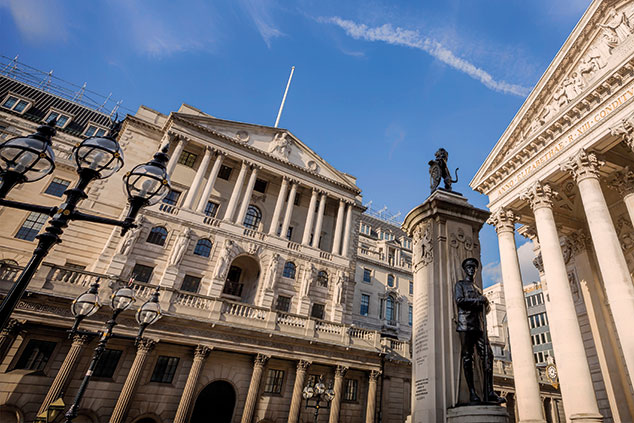
What’s happened?
The US Federal Reserve raised its key interest rate last week for the ninth time since late 2015 despite President Trump publicly urging it not to. Before the decision Trump tweeted: “I hope the people over at the Fed will read today’s Wall Street Journal editorial – counselling a pause in rate rises – before they make yet another mistake. Also, don’t let the market become any more illiquid than it already is. Stop with the 50b’s (meaning: end the $50bn-a-month unwinding of quantitative easing). Good luck.” This episode was the latest chapter in an extraordinary and unprecedented public battle between the US president and his pick as Fed chairman, Jerome Powell. Trump has called Powell’s decisions “crazy” and “loco” and made clear that he is “not even a little bit happy” with his appointment.
Are presidents supposed to do that?
Trump makes his own rules, obviously. But in venting his displeasure publicly he is certainly breaking with longstanding practice. The Fed is independent. It is not supposed to yield to political pressure, but to take its decision on the facts as it sees them. It’s supposed to be a similar story elsewhere too. But now “there’s concern among the central banking community that the independence of central banks could be under threat”, said South African Reserve Bank governor Lesetja Kganyago earlier this month.
In India, the chief of the notionally independent central bank quit after coming under huge pressure from the Nahendra Modi government to loosen policy and channel reserves into public spending in advance of next year’s election. In Turkey, President Erdogan has seized de facto control of the (again supposedly independent) central bank. In both Argentina and Brazil the central bank bosses recently quit for political reasons. And closer to home at the Bank of England, Mark Carney’s role has been increasingly politicised. Brexiteers have criticised him for being too gloomy, while his predecessor, Mervyn King, has also weighed in on Brexit.
What’s the rationale for independence?
The thinking is that politicians can’t be trusted to run monetary policy because they are too influenced by short-term political considerations – such as Trump’s misconceived fixation with stock prices (which benefit from easy money) as a measure of his own political success. In the years running up to an election, governments are tempted to cut interest rates to stimulate the economy – creating a political business cycle in which it’s harder to control inflation and destabilising booms/busts are more likely. These election cycles were common in post-war Britain. Bank of England independence was advocated by 1980s chancellor Nigel Lawson and then taken up by New Labour. The idea is that a credibly independent central bank will be more willing to keep inflation low, and more willing to take politically unpopular decisions – such as raising rates – when necessary.
Credibility is key?
Central banks work to policy parameters and targets set by politicians. But if the market has confidence in a genuinely independent central bank, this in itself helps reduce inflationary expectations – a factor which in turn makes inflation easier to keep low. So in the current Trump/Powell situation, for example, Trump’s sniping really does matter in terms of economics. That’s because if the market came to doubt the Fed’s independence – ie if it came to believe the central bank could be bullied or coerced into keeping rates down – then inflation expectations would rise. And, equally, if investors believed that Trump was prepared to sack a Fed chairman that he disagreed with, they would demand a higher interest rate to compensate for the increased risk of holding US government debt.
But politicians are in charge?
Yes. And that balancing act – of being independent within the confines of political control – has got harder since the financial crisis. In part, that’s because inflation and the boom-and-bust cycle are no longer seen as the major challenge facing big economies. Rather, stagnation and a lack of liquidity have been key themes in recent years. It’s also because the financial crisis meant central banks had to follow much bolder and more politicised strategies – in particular quantitative easing (printing money). The influence and power of central bankers has grown since the financial crisis – and that puts them in the eye of the political storm and more vulnerable to criticism. The European Central Bank, for example, has been accused of sticking too rigidly to low inflation targets when the eurozone’s bigger problems were slow growth and high unemployment.
Is independence sustainable?
Central bank independence is not an end in itself. It is a means to the end of delivering superior financial stability and economic performance. The truth is that central bank independence may only be possible when there is broad consensus on the goals of monetary policy and where an independent central bank is capable of meeting those goals. Both of those criteria are currently looking shaky.
The main Western central banks stand accused (in 2005-10) of fuelling major credit inflation followed by a needlessly harsh deflation that led to prolonged recession, and then fuelling dangerous asset bubbles with years of ultra-loose policy. So when it comes to political interference, the message is – expect more of it. “Reforming economic policy to fit a low-rate world requires discussion about the practice of monetary policy,” says The Economist. “That discussion will necessarily be political. It is not crazy to say so.”